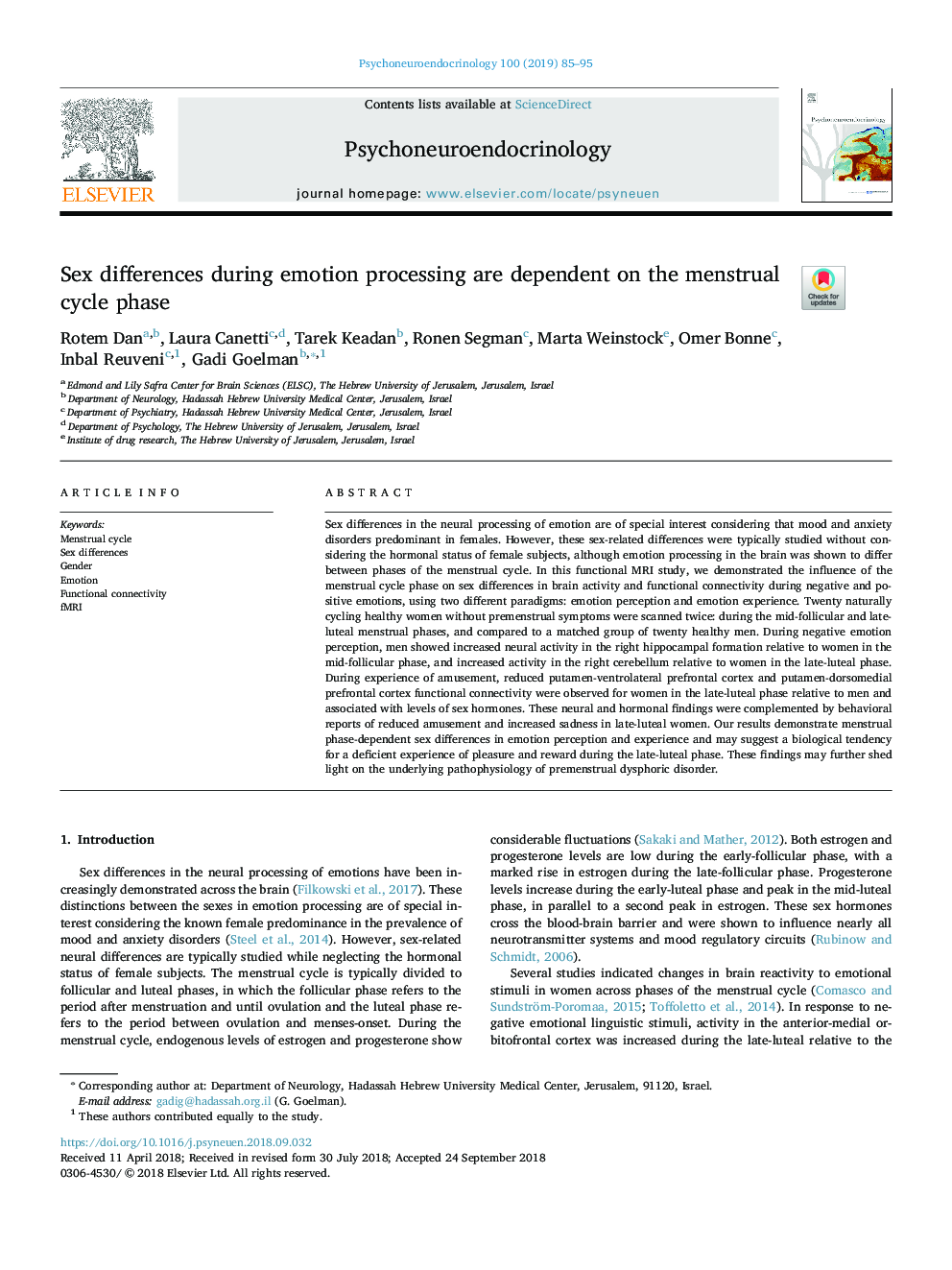| Article ID | Journal | Published Year | Pages | File Type |
|---|---|---|---|---|
| 11001553 | Psychoneuroendocrinology | 2019 | 11 Pages |
Abstract
Sex differences in the neural processing of emotion are of special interest considering that mood and anxiety disorders predominant in females. However, these sex-related differences were typically studied without considering the hormonal status of female subjects, although emotion processing in the brain was shown to differ between phases of the menstrual cycle. In this functional MRI study, we demonstrated the influence of the menstrual cycle phase on sex differences in brain activity and functional connectivity during negative and positive emotions, using two different paradigms: emotion perception and emotion experience. Twenty naturally cycling healthy women without premenstrual symptoms were scanned twice: during the mid-follicular and late-luteal menstrual phases, and compared to a matched group of twenty healthy men. During negative emotion perception, men showed increased neural activity in the right hippocampal formation relative to women in the mid-follicular phase, and increased activity in the right cerebellum relative to women in the late-luteal phase. During experience of amusement, reduced putamen-ventrolateral prefrontal cortex and putamen-dorsomedial prefrontal cortex functional connectivity were observed for women in the late-luteal phase relative to men and associated with levels of sex hormones. These neural and hormonal findings were complemented by behavioral reports of reduced amusement and increased sadness in late-luteal women. Our results demonstrate menstrual phase-dependent sex differences in emotion perception and experience and may suggest a biological tendency for a deficient experience of pleasure and reward during the late-luteal phase. These findings may further shed light on the underlying pathophysiology of premenstrual dysphoric disorder.
Related Topics
Life Sciences
Biochemistry, Genetics and Molecular Biology
Endocrinology
Authors
Rotem Dan, Laura Canetti, Tarek Keadan, Ronen Segman, Marta Weinstock, Omer Bonne, Inbal Reuveni, Gadi Goelman,
